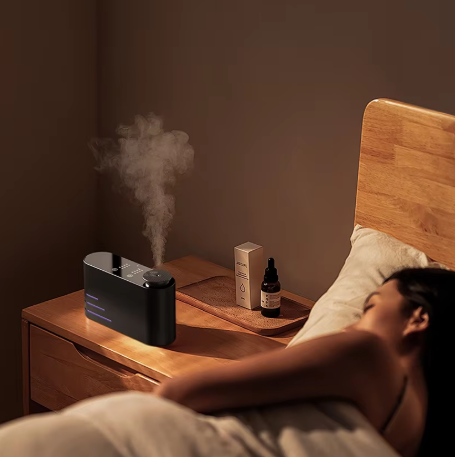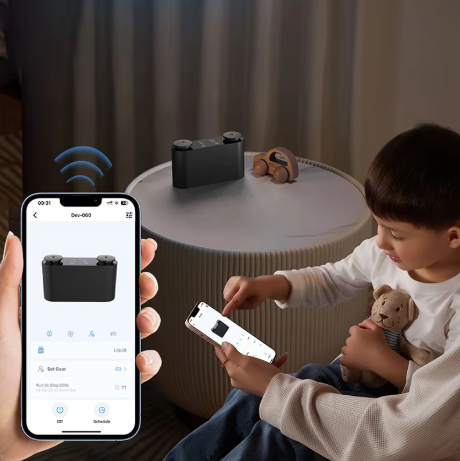The comfort level of our homes isn't just about what we see on the surface. Fragrances actually have a big impact on how we feel in our spaces. House diffusers work wonders when it comes to creating different moods throughout the day. They release gentle scents that fit whatever vibe we want for each room. But finding the right one isn't as simple as grabbing whatever smells nice off the shelf. There are several things to think about before buying. How big is the room where it will go? What kind of diffuser works best there? Does it cover enough area without being too strong? These questions matter because getting these details right makes all the difference between an enjoyable experience and something that just doesn't quite hit the mark.
In this article, weâll walk through how to choose the best house diffuser based on room dimensions and the type of ambiance you want to achieve.
Understanding Room Size and Diffusion Needs
Why Room Size Matters
Not all diffusers are designed to handle large spaces. A small unit intended for a bedroom may underperform in a living room or open-plan area. Conversely, a diffuser that's too powerful for a small room may result in an overwhelming aroma.
Matching the capacity of your house diffuser to the dimensions of each room ensures optimal fragrance distribution, enhances comfort, and prevents oil wastage.
Measuring Room Coverage
Most house diffuser manufacturers indicate coverage in square feet or square meters. For reference:
Small room: under 150 sq ft (e.g., bathrooms, closets)
Medium room: 150â300 sq ft (e.g., bedrooms, home offices)
Large room: 300+ sq ft (e.g., living rooms, open kitchens)
Check product specifications and choose a diffuser with appropriate mist output and reservoir capacity based on this guideline.
Types of House Diffusers to Consider
Ultrasonic Diffusers
Ultrasonic models use water and vibrations to disperse a cool mist of essential oils. These are ideal for medium-sized rooms like bedrooms or dens and often double as humidifiers.
Theyâre quiet, energy-efficient, and come in a variety of designs to suit home décor, but their coverage can be limited compared to more powerful options.
Nebulizing Diffusers
For large or open-concept spaces, a nebulizing house diffuser is a better choice. These devices use pressurized air to atomize pure essential oils without water or heat, resulting in a stronger and faster fragrance delivery.
Theyâre perfect for living rooms or areas with high ceilings but may be noisier and require more frequent oil refills.

Matching Diffusers to Room Types
Bedrooms and Relaxation Spaces
Smaller ultrasonic diffusers work well in bedrooms, where soft scents like lavender or chamomile can support rest. Select a diffuser with a timer and nightlight function for added convenience.
Look for low-noise models with intermittent misting options to avoid scent fatigue and maintain a calming environment.
Kitchens and Living Areas
These shared spaces often require more robust diffusion to overcome cooking odors or cover larger volumes. A high-output house diffuser with a larger tank and stronger misting power is ideal.
Choose invigorating scents like citrus or mint to energize the space and keep it feeling clean and airy.
Additional Features That Improve Efficiency
Programmable Timers and Intensity Control
A house diffuser with a built-in timer lets you schedule scent bursts throughout the day, avoiding overuse and conserving essential oils. Adjustable mist levels give you more control over fragrance strength, which is especially important in smaller rooms.
This helps create a consistent aromatic environment without overpowering the senses.
Smart Connectivity and Design Integration
Some modern diffusers offer app controls or smart home integration, allowing you to manage scenting remotely. If aesthetics matter, select a model that complements your home interiorâwood finishes, ceramic designs, or minimalist forms are increasingly popular.
A diffuser should blend seamlessly into your space while serving its functional purpose.
FAQ
Can I use the same diffuser in every room?
Not necessarily. Different room sizes require different diffusion capacities to achieve even scent coverage.
How often should I refill my house diffuser?
This depends on the tank size and misting frequency, but most units need refilling every 4â10 hours of use.
Are there any safety concerns with continuous use?
High-quality diffusers are safe for regular use, especially with natural oils, but it's best to follow manufacturer guidelines and avoid overexposure.
Whatâs the best type of diffuser for open-plan living areas?
Nebulizing diffusers are often best for large, open spaces due to their powerful scent dispersion without dilution.

